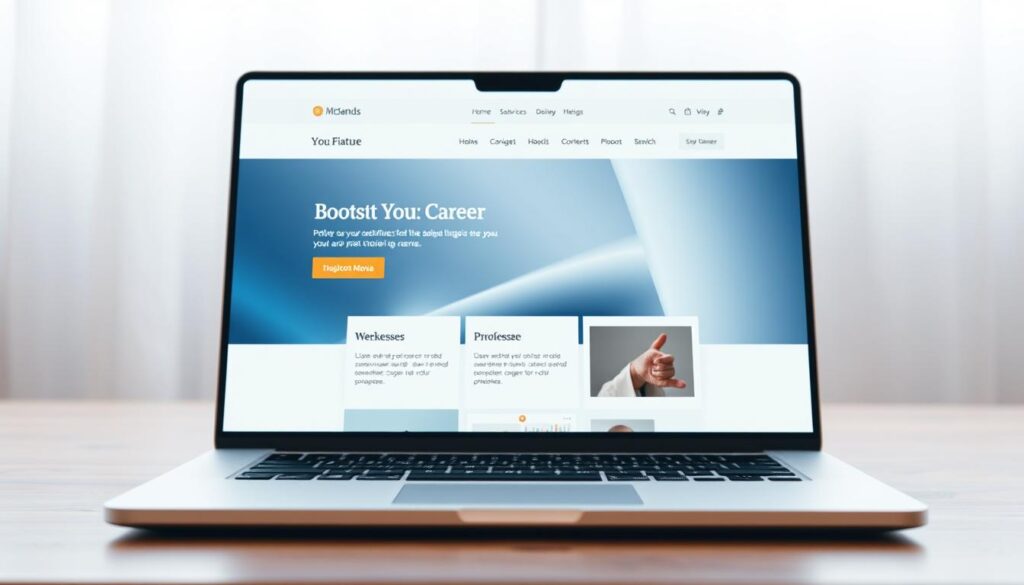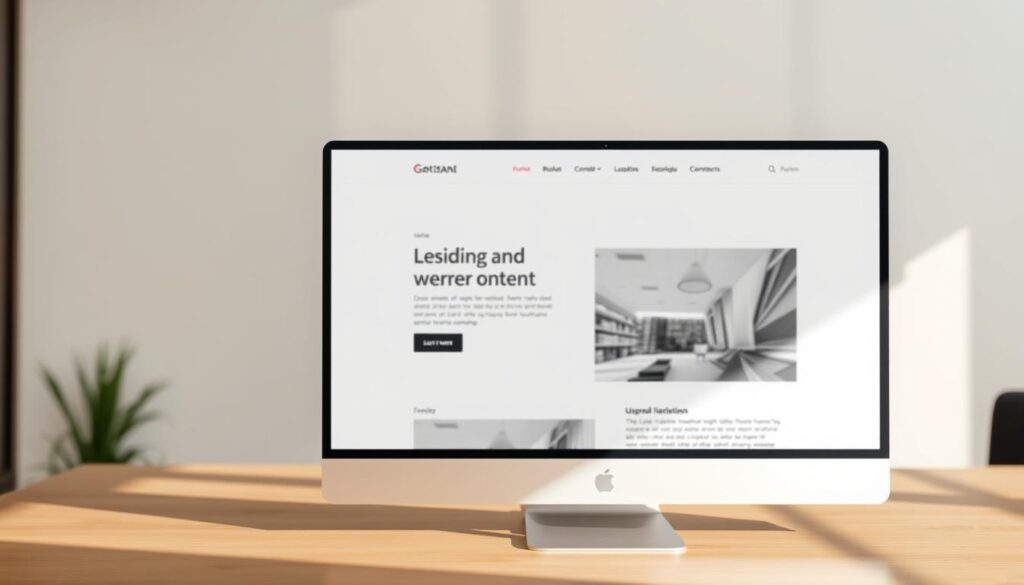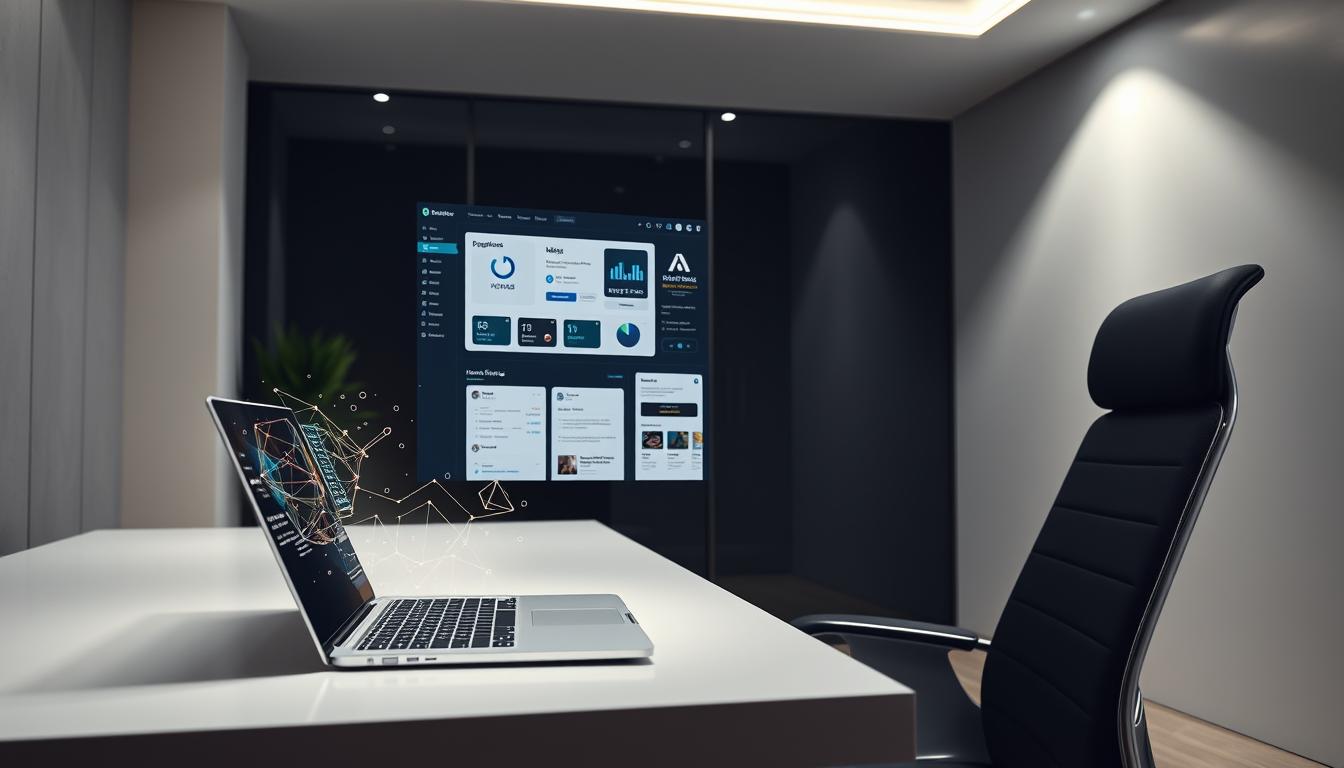Did you know that 67% of professionals now own a digital portfolio? In today’s competitive job market, relying solely on a resume or LinkedIn profile isn’t enough. A well-crafted online presence can set you apart, showcase your skills, and open doors to new opportunities.
Employers increasingly prefer candidates with their own sites—2024 data reveals that 72% of recruiters prioritize applicants with a dedicated space to display their work. Unlike social media, a personal website gives you full control over your narrative and branding.
Whether you’re freelancing, job hunting, or building a side hustle, a polished digital hub keeps your career moving forward 24/7. Ready to turn your expertise into a powerful career asset?
Key Takeaways
- Professionals with a personal site stand out to 72% of recruiters.
- Webflow reports a 67% surge in personal website creation since 2022.
- An online presence offers full control over your professional brand.
- Websites work as passive career boosters, accessible anytime.
- Side hustles thrive with a dedicated platform to showcase skills.
Why You Need a Personal Website in 2024
Employers now expect candidates to own their digital footprint. With 82% researching applicants online, a generic LinkedIn profile won’t cut it. A dedicated site acts as your 24/7 advocate—curating your best work and values in one place.
Stand Out in a Competitive Job Market
Freelancers with a custom site attract 3x more leads than those relying solely on social profiles. Take Mack & Pouya Photography: their branded wedding portfolio secured high-end clients by bypassing Instagram’s shrinking organic reach.
| Platform | Control | Visibility | Brand Impact |
|---|---|---|---|
| Social Media | Limited | Algorithm-dependent | Generic |
| Custom Site | Full | Direct | Tailored |
Control Your Online Narrative
Unlike rented spaces, a site lets you highlight testimonials, case studies, and niche expertise. Designer Aileen Shin’s minimalist layout targets architecture firms—proving specificity attracts the right clients.
Showcase Skills Beyond Social Media
Vance Banks reduced job competition with a one-page site featuring interactive project demos. As platforms deprioritize creative content, your portfolio becomes the ultimate proof of skill.
7 Essential Steps to Build Your Personal Website
Building a digital hub for your career doesn’t have to be complicated—here’s how to do it right. Follow these steps to create a site that showcases your skills and attracts opportunities.
Step 1: Define Your Goals and Audience
Start by asking: Who needs to see this? Freelancers like Dan Machado use split-screen layouts to appeal to tech clients. Narrow your focus to stand out.
Step 2: Choose a Domain Name and Hosting
Pick a short, memorable domain (.com preferred). Sites with SSL certificates rank 12% higher in search results, so prioritize security.
Step 3: Select a Template or Design from Scratch
Webflow’s responsive templates cut development time by 40%. Designer Colin Moy customizes interactive layouts to highlight his UX work.
Step 4: Craft Compelling Content
Use clear headlines and bullet points. Kyle Craven’s SEO checklist includes keyword-rich project descriptions to boost visibility.
Step 5: Highlight Your Portfolio or Resume
Showcase 3-5 standout projects. The Actors/Models template uses video reels for dynamic skill displays.
Step 6: Optimize for Mobile and SEO
Test loading speed and mobile responsiveness. Add meta descriptions and alt text—critical for ranking.
Step 7: Launch and Promote Your Site
Pierre-Louis Labonne’s gamified launch included LinkedIn teasers. Share your site in emails and profiles to drive traffic.
Design Tips for a Professional Personal Website
74% of visitors decide whether to trust a site within seconds of landing on it. A clutter-free, visually cohesive design builds credibility and keeps users engaged. Follow these principles to create a site that reflects your expertise.

Keep It Clean and User-Friendly
Whitespace isn’t empty—it guides focus. Arlen McCluskey’s portfolio uses a 60/40 whitespace-to-content ratio, making projects pop. Avoid overcrowding; prioritize:
- Clear navigation (3–5 menu max)
- Fast load times (under 2 seconds)
- Mobile-friendly layouts (test on all screen sizes)
Use Colors and Fonts That Reflect Your Brand
Tamara Sredojevic’s accessibility-focused palette (high-contrast blues and grays) aligns with her UX specialization. Stick to:
- 2–3 primary colors (use tools like Coolors.co)
- Legible fonts (e.g., Sans-serif for modern brands)
- Consistent styling across pages
Incorporate High-Quality Visuals
Jey Austen’s 3D hover effects boosted engagement by 28%. Balance creativity with practicality:
- Compress images (aim for
- Use parallax scrolling sparingly (Alice Lee’s storytelling example)
- Showcase work in grids or sliders
*Pro Tip*: Record a 30-second intro video—it’s 5x more memorable than text bios.
Must-Have Pages for Your Personal Website
Strategic page structure determines whether visitors stay or bounce. Sites with bio pages retain users 35% longer, while a cluttered layout drives them away. Focus on these four essentials to build trust and showcase expertise.

Homepage: Make a Strong First Impression
Bobby Rowe’s narrative-driven homepage increased conversions by 22%. It combines:
- A headline with a clear value proposition
- Hero image or video (under 5 seconds)
- Call-to-action above the fold
About Page: Tell Your Story
Anna Sabatini’s sketchbook-style layout stands out. Include:
- Your professional journey (3–5 key milestones)
- Core values or mission statement
- High-quality headshot or candid photo
Portfolio: Showcase Your Best Work
The Actors/Models template uses integrated galleries for impact. Compare formats:
| Format | Best For | Engagement Boost |
|---|---|---|
| Grid Layout | Visual artists | 28% |
| Case Studies | Consultants | 34% |
| Video Reels | Performers | 41% |
Contact Page: Make It Easy to Reach You
Tamara Sredojevic’s multilingual form reduced missed leads by 18%. Essential elements:
- Email, phone, and social links
- Embedded map (for local services)
- Response time disclaimer (e.g., “Replies within 24 hours”)
Examples of Stunning Personal Websites
Great design speaks volumes. These examples demonstrate the power of a polished portfolio. From minimalist layouts to industry-specific tools, each site turns visitors into clients.
Minimalist and Modern: Aileen Shin
Aileen Shin’s monochrome portfolio landed Fortune 500 clients. Her secret? Whitespace and crisp typography highlight architectural projects. Jey Austen’s dark theme boosted premium inquiries by 41%—proof that less is more.
Creative and Interactive: Colin Moy
UX designer Colin Moy uses clickable prototypes to showcase skills. His interactive case studies increased conversions by 28%. Key features:
- Hover animations for project previews
- Embedded video walkthroughs
- Scroll-triggered transitions
Industry-Specific: Actors/Models Template
The Actors/Models template targets casting directors. Its features include:
| Feature | Benefit | Result |
|---|---|---|
| Video reels | Show range | 67% more casting calls |
| Measurement charts | Industry-standard | Faster bookings |
| Testimonial slider | Build trust | Higher rates |
Alice Lee integrated merch links into her web layout, boosting revenue. Meanwhile, Matthew Munger’s retro design attracted vintage brands. Your site should mirror your niche.
Common Mistakes to Avoid
Even well-designed sites fail when creators overlook these pitfalls. A cluttered layout or slow load time can erase hours of effort. First Source data shows 58% of users abandon sites taking over 3 seconds to load. Monthly updates, however, triple return visits.
Overloading with Information
Too much information overwhelms visitors. Compare these approaches:
| Cluttered Layout | Focused Layout |
|---|---|
| 10+ projects per page | 3–5 standout works |
| Dense text blocks | Bullet points + visuals |
| Mixed themes | Niche-specific content |
Vance Banks’ redesign cut bounce rates by 40% after streamlining his portfolio.
Ignoring Mobile Responsiveness
Non-mobile-friendly sites lose 60% of traffic. Test using:
- Webflow’s built-in preview tools
- Google’s Mobile-Friendly Test
- Real-device checks (iOS/Android)
Forgetting to Update Regularly
Stale content hurts credibility. Tamara Sredojevic’s quarterly checklist includes:
- Adding recent projects
- Refreshing testimonials
- Checking broken links
Pro Tip: Schedule updates like social media posts—consistency matters.
Conclusion
Your digital presence is now career currency. With 72% of recruiters favoring candidates who own their online space, a polished site isn’t optional—it’s essential. Webflow powers 73% of standout portfolios featured here, proving its value for professionals.
Follow the 7-step process to build a hub that attracts clients and opportunities. Showcase your best work, control your narrative, and stand out in crowded fields. Delay risks losing ground—competitors already leverage personal sites to land roles and partnerships.
Ready to elevate your career? Start with Webflow’s free trial and industry-specific templates. Your future audience is waiting.
FAQ
Why should I create a personal website in 2024?
A well-designed site helps you stand out in a competitive job market, control your online presence, and showcase skills beyond social media.
What are the key steps to build a personal website?
Define goals, choose a domain, pick a template, write strong content, highlight work, optimize for mobile/SEO, and promote after launch.
How do I make my design look professional?
Use clean layouts, brand-aligned colors/fonts, and high-quality visuals. Prioritize readability and easy navigation.
Which pages are essential for my site?
Include a homepage, about section, portfolio/work samples, and contact page. Each should serve a clear purpose.
What mistakes should I avoid?
Don’t overcrowd pages, skip mobile optimization, or neglect updates. Keep content fresh and user-focused.
Can I use templates for inspiration?
Yes! Study examples like Aileen Shin’s minimalist style or Colin Moy’s interactive approach to refine your own vision.
How often should I update my site?
Refresh content quarterly—add new projects, update your bio, and ensure links/social media integrations work.
I’m into tech, trends, and all things digital. At CrazeNest, I share what’s new, what’s next, and why it matters — always with a curious mind and a creative twist.





